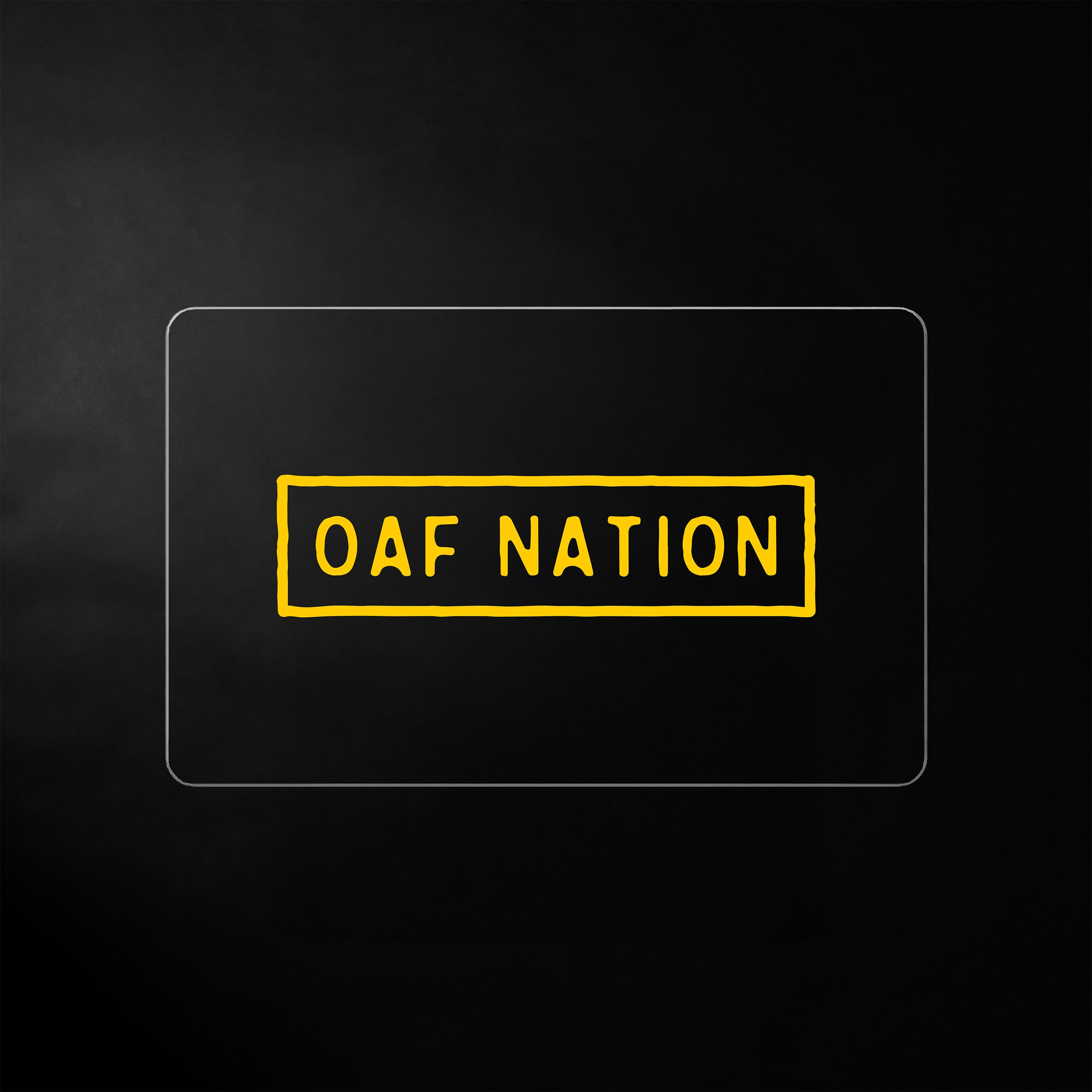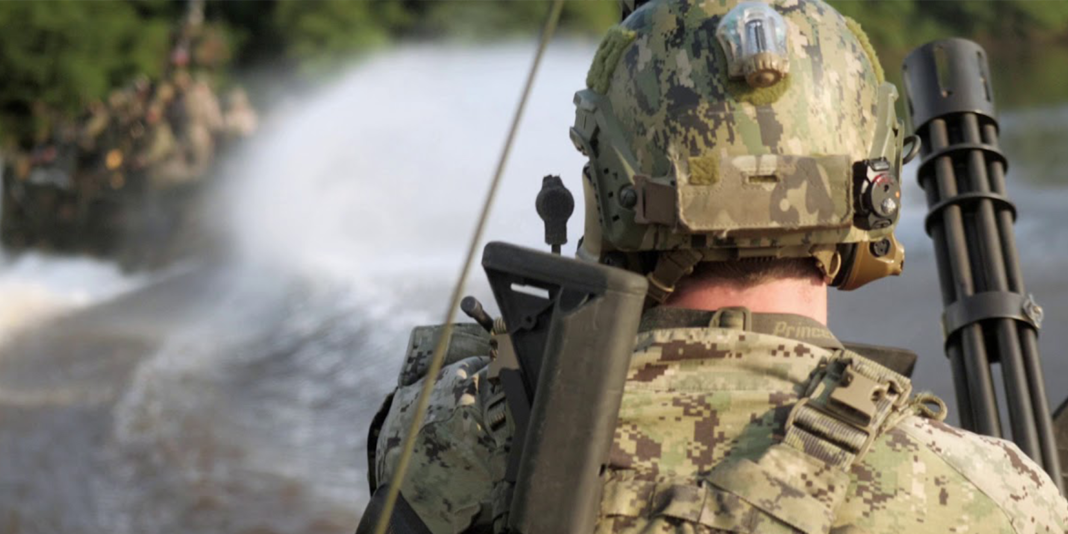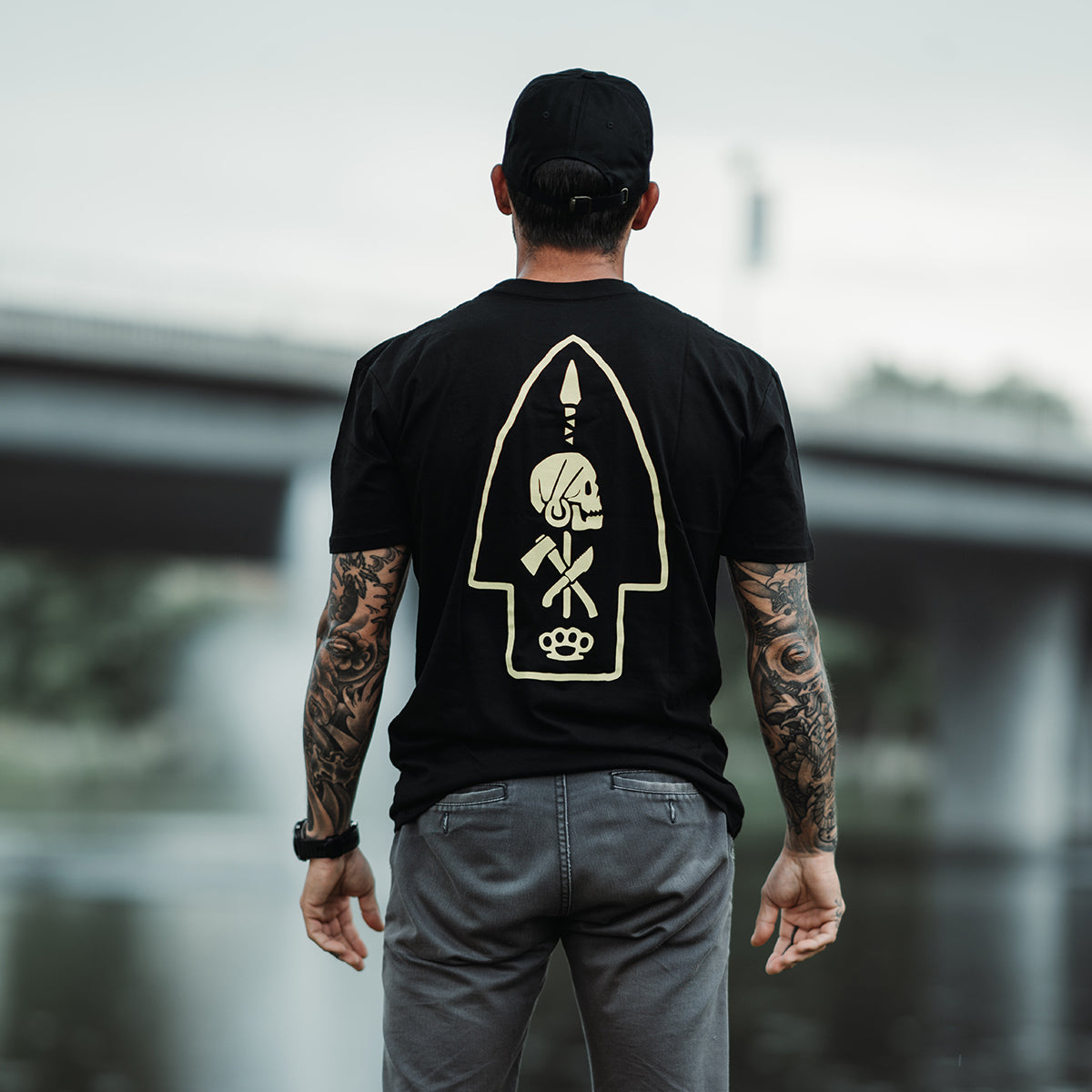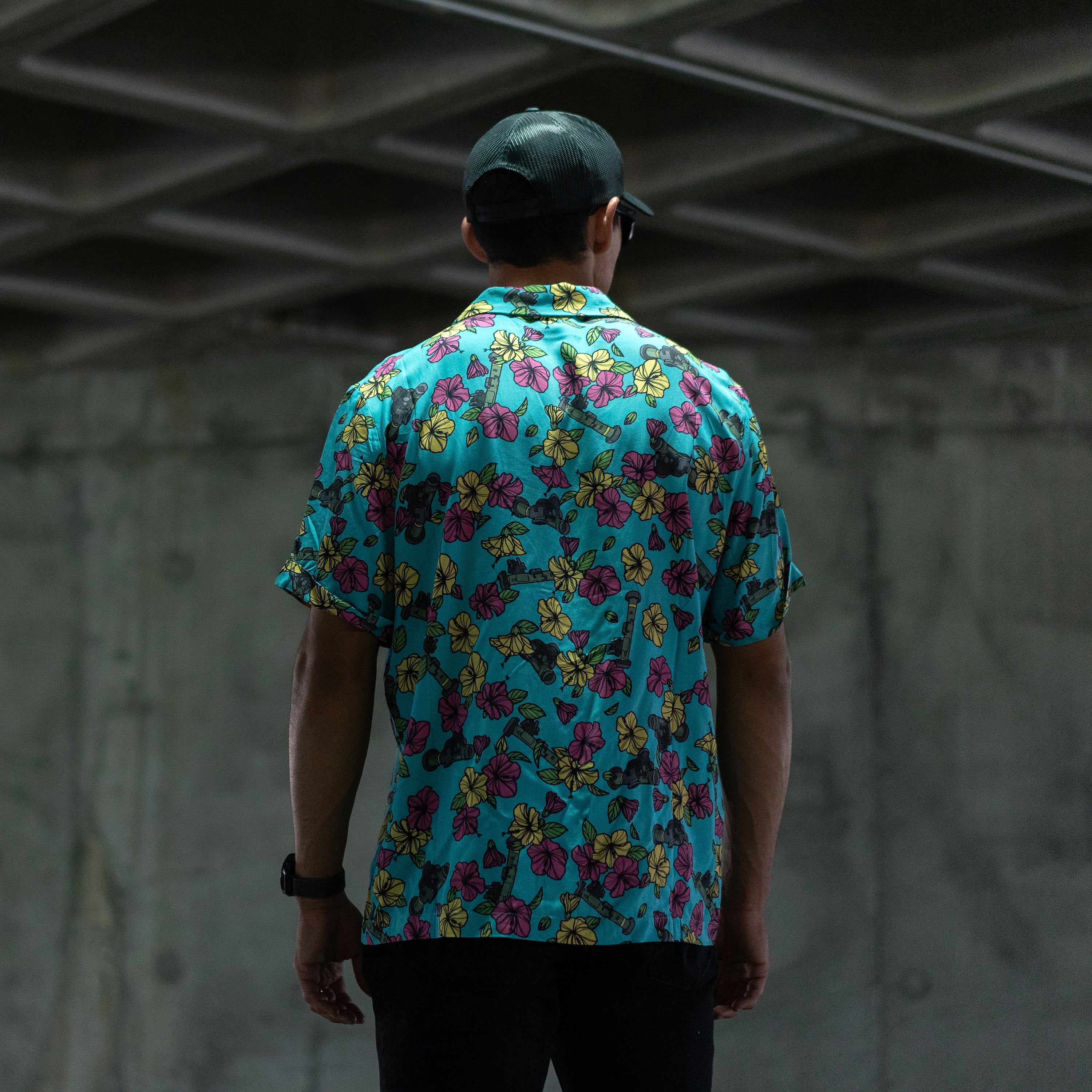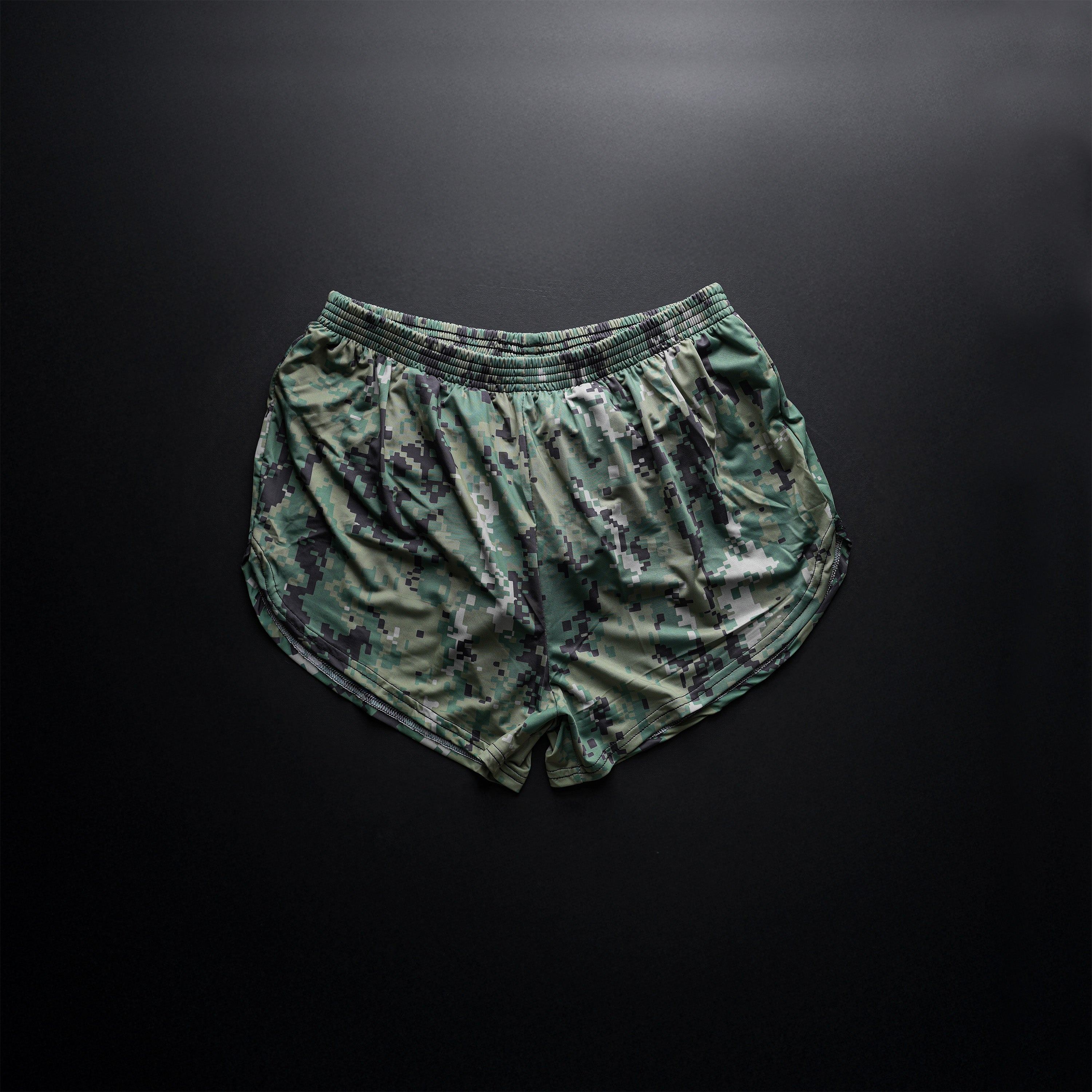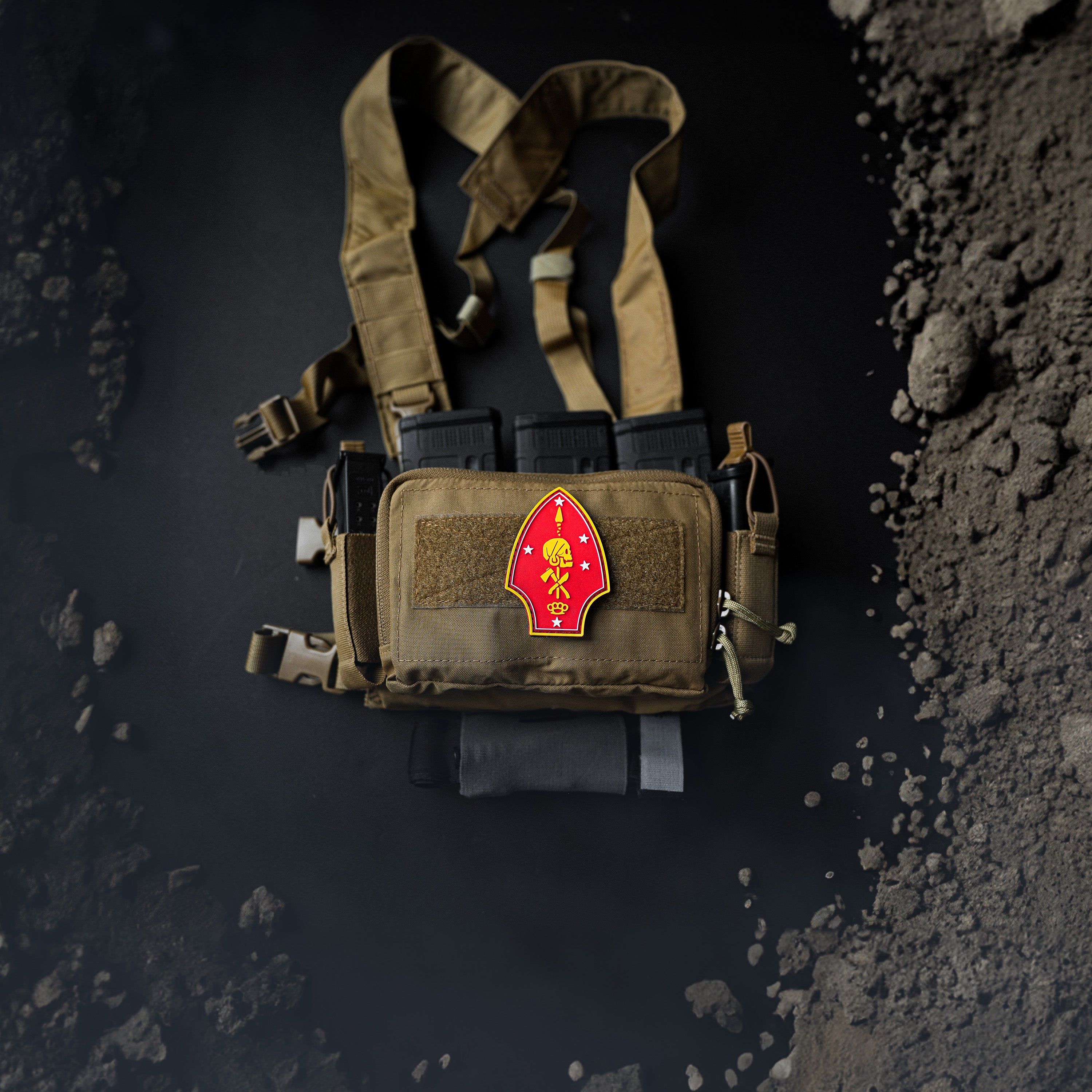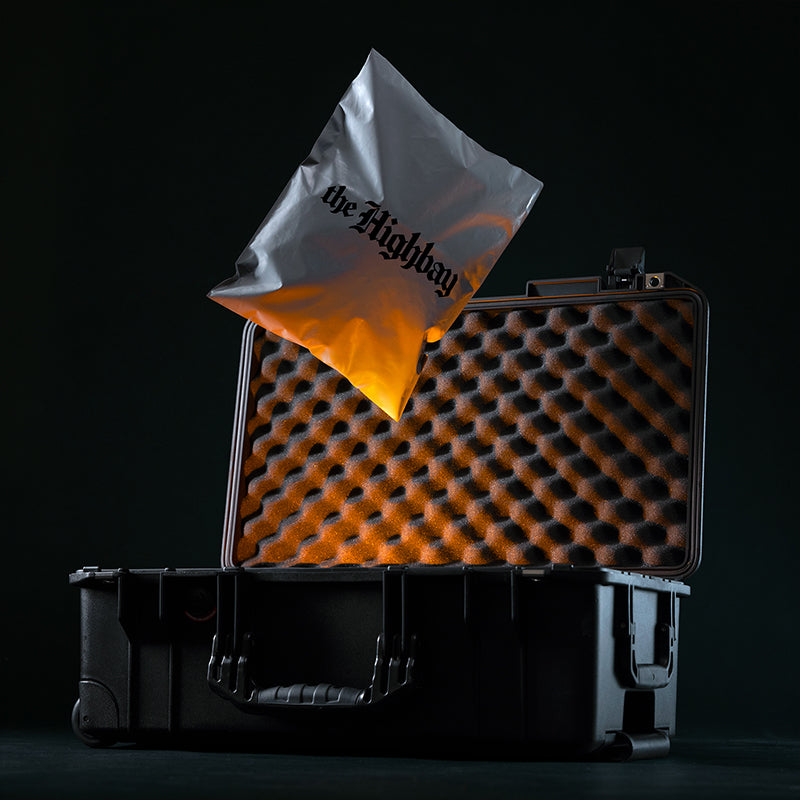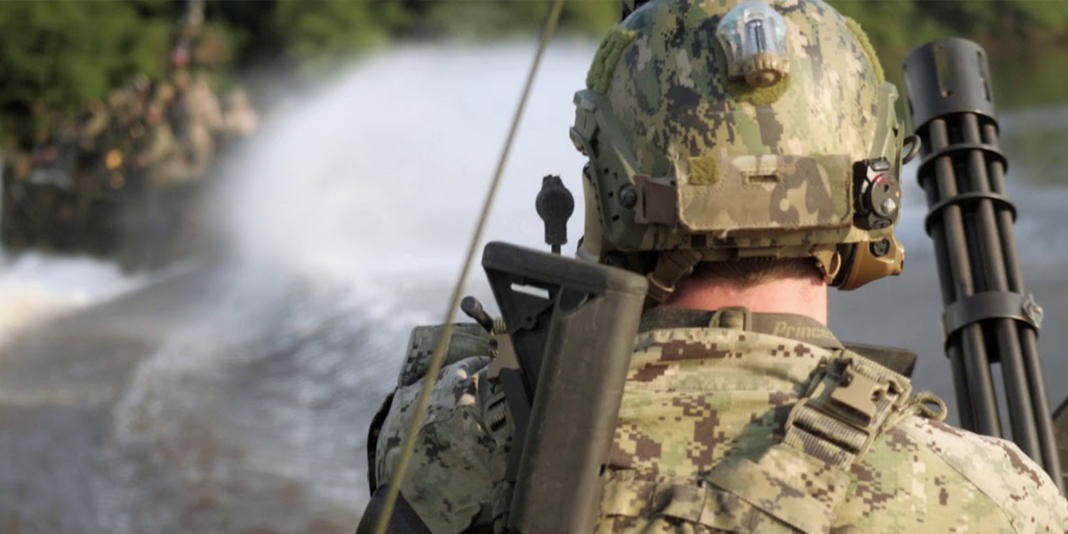
A Pair of Boots
I was still 17 when I enlisted in the Navy. My parents had to sign the enlistment paperwork for me, since I wasn’t of legal age. This wasn’t without some resistance. I could have become a doctor. Or a lawyer. These are the two jobs that are supposed to be in your future when you’re the smart kid in a rural town of 900 people. Instead, I was heading for selection for a special operations unit called SWCC, short for Special Warfare Combatant Crewmen. The guys on the little boats in the commercials. My high school principal called me into his office to make sure I was aware of the flaws in my plan. He steepled his fingers in front of him. “So, you joined the Navy and you’re going into this… unit. You know that’s a lot of swimming, right?”He had the facial expression of a parent explaining that stoves are hot. “Can you swim?” Small towns in South Dakota aren’t known for producing talented swimmers. The nearest pool with actual lap lanes was 90 miles away. We had a pool in town, but it was a place for kids to splash around in waist-deep water. The most swimming you’d do there was to cover the ten feet from the end of the diving board back to the side. I shrugged. “I’ll figure it out.” By the time I shipped out I’d been making the 3-hour roundtrip drive to an Olympic-sized pool to practice, but progress had been slow. I’d found something for which I had a distinct lack of natural talent. I swam like a drowning monkey. I went into the SOF world because I wanted a challenge, and, more specifically, I wanted to hit bottom. I wanted to find out who I was when things got really bad. I guess I was asking for what was to come. During the first week of Navy boot camp, on the same day you take your basic swim test, you're shown a series of four videos about each of the special programs. I raised my hand, put my name on a list and volunteered for selection. Shortly thereafter I was sitting, shivering, on a small blue tile in a muggy, chlorine-scented locker room amongst rows of other candidates. It wasn't cold. I was shaking because I was scared. On command, we filed out of the room, holding up either one finger or two fingers to designate which pool we were to line up in front of. I was so flooded with adrenaline that I wanted to throw up. The next six years of my life depended on my ability to pass this test. We tried to space out in the crowded pool and pushed off the wall at the whistle. Two or three laps later, choking and sputtering, I felt a hand tap me on the shoulder as I reached the wall to turn around. "You. Out of the water. You're not gonna make it. You've still got some time to catch stroke development; so if you want to continue, head to that pool down there and pay attention."Stroke development was being led by an Explosive Ordnance Disposal Chief named Ferris. He spoke calmly but loudly, as if already exasperated with us. "Hold your hand up over your head like this. Now bend your hand like this and pull your arm down like this. There you just learned half of the side stroke. I can teach combat sidestroke to a monkey in thirty minutes. Now enter the water." I had a few more chances to learn the combat sidestroke with Instructor Ferris, and on my third and final attempt, passed the screening test by a whopping seven seconds. I was so fatigued from the swim that I spent a good portion of the timed run afterwards in a sideways gait in order to puke while moving. Stopping for any reason, including to vomit, would result in immediate failure of the test. After squeaking through the screening test, I began attending the mandatory Special Programs workouts, which began promptly at 3:45 a.m. At the time (the early 2000’s), Navy SOF candidates went from boot camp to an “A” school, where you learned the job that you’d do in the fleet Navy if you didn’t make it through your selection course. After A school, you’d find your way to selection, usually after a holding period in a prep program called SCRUFT duty. Due to a combination of a high ASVAB score and naive gullibility in the face of recruiters, I ended up in an electronics technician school. The school covered communications and radar gear on big “gray Navy” ships, from wave propagation theory down to how to take apart circuit boards and isolate the broken doodad that keeps the radar sweep from going in circles.I was the only person in the school in the special programs pipeline, out of around 400 students. Some of my classmates skipped lunch in order to play Dungeons and Dragons in their rooms. My class was the first to go through a new curriculum made by mashing two six-month courses into one 10-month course. We had a test roughly every two weeks. If you failed the test, you had one chance to re-take it. If you failed the second time, you were dropped from the course. If I were dropped from the course, I’d lose my SWCC program and spend my enlistment on a ship in the fleet. My class started with 20 students and by graduation there were 5 of us left. I failed every test once and learned just enough from the initial exposure to identify what I needed to pass the re-test. Every two weeks I was on the chopping block, at risk of losing my shot at special operations not due to a physical failure like missing a swim time or falling short on a run, but because I couldn’t remember what the fuck a metal oxide semiconductor field effect transistor did to make a giant radio work. Between the actual classroom time and the after-hours studying and tutoring I needed to stay in the course, I spent about 12 hours a day dedicated to electronics nerdery, starting after breakfast. Before breakfast, I would be up at 3:00 a.m. to make the special programs workouts that started on the other side of the base.Most of the time, these workouts were in the gym or around the base, either on long runs or at a strip of beach where we would do calisthenics and try to avoid low-crawling through dead fish. This was with the exception of Wednesday. Wednesday was pool day. Occasionally, I would be encouraged by the appearance of a new trainee who swam slower than me, thus drawing the attention of the instructors and letting me relax into the relative comfort of oblivion. This was always short-lived. Nobody who swam worse than I did lasted more than a week or two. One of my first pool days was in the early winter, near Chicago. After the obligatory warm up in the gym, we lined up on the edge of the pool. The doors outside had been opened and the cold air outside air had rushed in and mixed with the warm humidity inside, creating a thick fog. Above the fog, in a lifeguard chair, was Instructor Cassidy, a SEAL instructor. At this point, the farthest I had swum non-stop in my life was 1000 meters. I had only passed the screen test, with its 500 meter swim, a few weeks prior.“Warm up! 2000 meter sidestroke! First group, enter the water!... Bust ‘em!”At that moment, I would have given almost anything to avoid getting in that water. At Cassidy’s call of “Bust ‘em!” we push off the wall and start swimming. The next group enters the water behind us and follows momentarily. Shortly, the person behind me passes me in the water. It is impossible to swim smoothly with the number of people fighting to pass each other in the narrow lanes, and the water is a chaotic tangle of kicks and collisions. I soon fall to the back of the pack. When the swim is over, I drag myself out of the water, heaving and exhausted. We are lining up single file at the side of the pool as Instructor Cassidy explains the next portion of the workout. We are to enter the water one at a time at the far end of the pool and sprint freestyle to the end, then duck under the lap lane rope and sprint back, repeating the process until we have swum every lane. Each time we are passed, we must get out and do ten pushups, then get back in. I swim freestyle worse than sidestroke. To say that I could even swim it at all would have been optimistic. I am passed constantly. Under the fog, the water more closely resembles a waterborne rugby scrum than a swim. I do countless pushups, and my arms and chest are nearing uselessness. I am the last one to exit the pool. Standing upright requires a good deal of effort. Somebody does something to annoy Instructor Cassidy and we are dropped for pushups, flutter kicks and eight-counts. A trainee stops doing eight-counts to throw up in the pool drain. Cassidy bellows from the chair, “You don’t want to put out? You don’t think you need to fucking be here? Do you people have any idea what is getting ready for you? First man, enter the water! Bust ‘em!”The only thought I can keep in my head as I swim is that each stroke brings me closer to being done. There is no way this can continue much longer. Cassidy is in full form, yelling and threatening anyone who draws his attention. I finish again and get out of the pool, crawling before bringing myself to my feet at the back of the pack. I didn’t hear much of what Cassidy had been saying to the trainees as they formed up. It was about the time we’d normally finish. “Do it again! First man, enter the water! Bust ‘em!”By the middle of this series I could no longer swim with continuous effort. It was more of a sequence of fitful strokes punctuated by choking and sinking. Halfway down the last lap I blinked and reopened my eyes to find myself drifting a few feet under the water. I snapped back into consciousness and kicked to the surface, then struggled my way to the end of the lane. I hung on to edge of the pool and tried unsuccessfully to lift myself out. Two guys stepped out of line to grab me by the wrists and pulled me out of the water. I slid on my belly like a beached orca, pulled my knees under myself and finally got up and staggered to the back of the line. If we had to swim again I would pass out in the water. “Get out of here.”We started filing out of the pool back into the gym. Instructor Cassidy stopped me as I walked past. “You. You need to pick it up. You’re way behind the power curve.”I tried to slow my breathing well enough to speak intelligibly, “Hoo Ya, Instructor Cassidy… I just learned to swim… I’ll get better.”This was not the last time I would be pushed to unconsciousness by a workout in the pool. I spent much of the next two years becoming fitter so that I could put more effort into swimming badly. It would be a long time and countless workouts before I learned good technique. I never blacked out more than a brief second or two, and I never told anyone when it happened. One of the first lessons I learned upon inhaling water was to cough underwater in order to conceal the sound. An instructor taught me that. "You. If you have to cough, do it underwater, but only on the exhale because drowning is bad and you might make me get my shoes wet pulling you out. What does coughing mean? It's a sign of weakness. And what does showing weakness do? It draws attention. You don’t want attention. So cough underwater. Always underwater. Now swim." About a year later, I was in Coronado in SWCC selection. By this time, I could run 4 miles at an 8-minute pace while holding a casual conversation with the person next to me, but the water was still my own personal hell. I wasn’t uncomfortable in the water – I’d long since come to terms with the physical symptoms of hypoxia and near-drownings – but I was still barely hanging on in most water-based events. Statistically, nearly everyone in the civilian population is lighter than water by an average of about six pounds. This doesn’t seem like a lot, but keep in mind that most life jackets have a buoyancy of about 20 pounds. I, however, was negatively buoyant. I was an unusually lean guy at the age when people peak in bone density, with an already-extensive strength training background that gave me the non-benefit of increased muscle density. My body was just slightly heavier than water. In saltwater, I could float, but in fresh water, even with completely full lungs and good positioning, I’d sink if I held still. This wasn’t much of a problem in most cases, but it made my life a good deal less pleasant in certain situations. Treading water in boots and cammies while holding a weighted rubber M4 shape over my head was one of those situations. At the pool one day, our class gathers at one end. Toward the middle, at the bottom, are a half dozen M4 shapes. We have to dive down, swim a lap or two with one of them, and then stop in the middle of the deepest section of the pool and hold them overhead while treading water for one minute. If the rifle dips underwater, you fail. If your hands come off the rifle, you fail. Treading water in itself isn’t that bad, even in a full uniform, but when you add the dead weight of the rifle, plus the weight of your arms and head (on the off chance they’re above water), it all makes a difference. My turn comes. I finish the swim, stop in the deepest section and put the rifle overhead. I suck at treading water. I sink like a rock. God hates me. I kick furiously for all I’m worth. My head is under most of the time, the rifle comes under and I take one hand off it and thrash it through the water and try to get my head up for a breath of air. A whistle goes off and we are called to the side of the pool. Three people pass. The rest of us go out to try again. Now I’m tired. This time is even worse. The other two guys manage to pass. Instructor Trueheart is there in the water next to me. “This is it Weller! You have to pass this evolution or you do not continue with training! Make a choice! What are you gonna do?” I push off the wall and start treading again. In desperation, I slash one hand down through the water and it snags on the shoulder strap of the rifle, slamming it under the surface. Still under the water, I scream in frustration, using the last of my air. Totally exhausted, I grab the wall and vomit in the drain at the side of the pool. “What are you gonna do Weller? Make a fucking decision, now!” I push off back into the center of the pool and fail again, seconds short of the time. They tell me to get out of the water and take a seat at the end of the pool and do some thinking. I get there and collapse and at this point I think it’s over. I remember gasping for air, my head on the cold concrete, blowing ripples in the puddle in front of my face and wondering if they would let me go to a different program instead of the fleet. Eventually I am joined by five others from my class. We are called back to the pool for one last try. While sitting there on the pool deck, I tried to organize my thoughts and find any way I could possibly pass. I remembered another guy from our class, an avid surfer from South Africa and the best swimmer in class, telling me that the best propulsion you can get with boots on is by using the side of them in a frog kick. I had never used a frog kick before and figured I might as well try it. The frog kick worked. My head was even out of the water for about the first half of the tread, which was a new sensation entirely. The week was over, and I still remained. Two people were no longer with us when we left the pool. They had made the other choice. They had quit. Fast forward a little bit more. I am two weeks away from graduating SWCC 47’s Basic Crewman Training. We have one of our final timed swims – 1,000 meters in open water wearing boots and full cammies. The cutoff was 45 minutes. My swim buddy and I finish in 46:02. We are rolled out of training. Of the 50 candidates who started, the remaining 13 graduate shortly after. My swim buddy and I are the first SWCC students sent to a program called the Brownshirts. We were privileged to be accepted into the Brownshirts. It’s a BUD/S program, normally only open to guys who are rolled after they have passed Hell Week. At the time, the NSW Center was experimenting with mixing aspects of the two programs. My swim buddy, Doug, and I were the first SWCC students permitted into the program. Brownshirtland was the most physically challenging thing I’ve ever done. We did every timed physical evolution that each BUD/S phase was doing each day, mixed in with an array of workouts created by the Brownshirt instructors. Everything was back to back. Monday might be a four mile timed run in soft sand, then a 90 minute conditioning swim, then a ground-based strength workout, then a rope climb, dips and pull-up workout. Tuesday would be a two-mile ocean swim, a run to the other side of base, then a workout of plyometrics, sprints, buddy-drags and exercises with Chief Nave’s 75 pound kettlebells finished off with another run to the obstacle course.We were expected to improve our performance on every timed event each time we did it, and the other workouts were each set at a level of intensity that meant that when people starting puking or passing out you were about 2/3rds done. There was a crucial difference here, though. I had legitimate performance coaching. We were in the water every day. If we weren't swimming in the ocean, we were busting out sprints in the pool. Always around two miles per day. The pool workouts were supervised by a man named Instructor Geisel. He was a genius at coaching swim technique, and after watching Doug and I swim on our first day in the program, was able to pick apart our stroke and give us a number of specific things to improve on. This was a significant change from the technical advice on swimming I had received from instructors in the past, which could all be summed up with the words "Just put out more."Geisel watched me like a hawk, stopping me regularly to improve some aspect of my technique. I’d feel a tap on my head as I hit the wall at the end of the pool. “You need to bend your arm more. Like this. Make this shape.”I’d bend my arm as he showed me, practicing the stroke. “Good. Just so we’re clear, what are you going to bend?”“My arm.”“And what are you going to do with your arm?”“I’m going to bend it.” “That’s right. Go do it.” The coaching in the pool paid off. I was rolled into the Brownshirts for failing that timed 1,000 meter full-uniform swim by one minute and two seconds. After six weeks in the Brownshirts, the instructors made me do it again. I passed by over ten minutes. I had improved more in six weeks than in the previous year. Swimming as hard as I could wasn’t enough until I learned how to swim well. After four months in the Brownshirts, I classed back up with SWCC 48 and, 30 months after starting the process, finally graduated and put on a pin.The question for anyone undertaking something as grueling as a SOF selection course is "How?" How does one make it through something like this? Over the course of my time in the pipeline, including six months spent at SCRUFT duty processing new candidates into the program while going through prep training for my own course, I saw literally thousands of candidates come and go. Since leaving the Navy, I’ve been training others for SOF selection. My business partner and I have trained people for almost a decade for selection courses in every branch of the US military alongside half a dozen other countries, with a success rate over 90%. Between that and my time in the pipeline, I’ve gotten a pretty good sense of one of the most important factors that makes or breaks a candidate: It’s knowing why. It’s knowing where, and to whom, your mind goes when you hit your darkest moments. When, as a mentor once told me, you have your Waterloo. For me, one of the main things that I kept in mind during my time in selection was a mental image of a pair of boots. Yes, boots. Snow boots. To put this in context, we have to go back to South Dakota. We didn’t grow up poor, but my parents were raising four kids on the salaries that you have when you live in rural South Dakota, so there were some constraints. Winter in South Dakota is not something they’re ever going to put in a tourism brochure. It frequently hits the kind of cold that makes the inside of your nostrils freeze when you inhale. You avoid touching metal with your bare hand because it might either stick to your fingers. The wind is relentless and blowing snow wipes out visibility. Snow drifts bury highways.My family had two vehicles. My mom was a paramedic, constantly on call, and needed one of them. The other was my dad's.When winter rolled around, my dad gave us his truck so that my three siblings and I could drive to school. My dad would leave for work before we left for school, often before the sun was up. Since we drove, he would walk. In a roaring blizzard we would drive comfortably to school while my dad put on his snow boots to trudge through the snow to his office. That evening, again often getting in after the sun had set, he would walk back in, knock the snow off his boots at the door and set them there for the next day. Every day. I have always had in my mind the image of those thick, heavy boots sitting there by the door in a puddle of melted snow. They were the tall kind, designed so that you wouldn’t have anything falling down inside the boot around your ankles as you kicked through deep snow. To me, those boots represented the sum of so many sacrifices my family made for me so that I could be comfortable and eventually successful. One more little thing that my Dad gave up daily for the sake of me and my brothers and sister. With that image in my mind, I absolutely could not accept the idea of calling my dad one day to tell him that I was done. That I had quit. That after eighteen years of trying to give me every advantage he could so that I could make something of myself I failed because I made a decision to stop trying. That the water was too cold, or the swim was too far, or I just didn’t want to do any more pushups. I would have rather died than make that phone call.In my lowest moments, I saw those boots by the door, every day. Every fucking day. And I’d make my choice, push off the wall and keep going.
Written By Craig Weller
September 6, 2019

